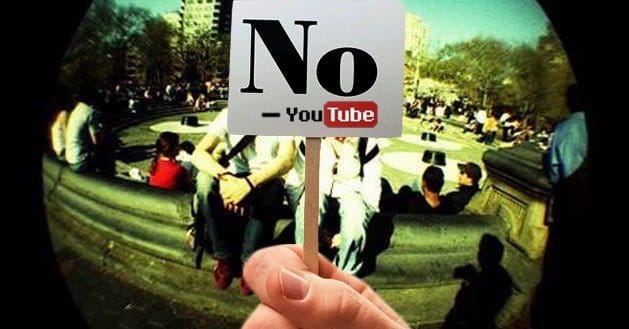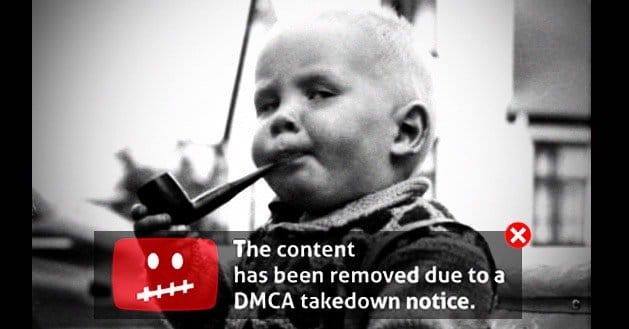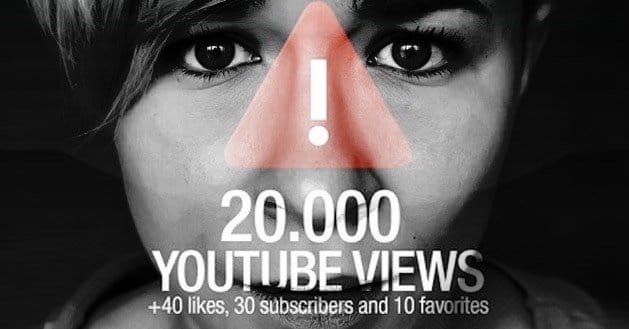 Written by ContentPowered.com
Written by ContentPowered.comYouTube is known for their rather draconian policies when it comes to removing videos. It’s like the old adage of “shoot first, ask questions later,” only YouTube doesn’t really concern itself with the asking questions part. They shoot first by removing any video that may possibly get them in trouble, and then complaints and appeals get lost in their labyrinthine appeals system.
The question of whether or not YouTube’s policies are too strict requires some moral and practical judgments. It also requires looking at each potential reason a video is taken down from YouTube.
Terms of Service Violations
The YouTube terms of service lay out the guidelines content must follow in order to be hosted on the site. These include such no-brainers as “nothing illegal” and “don’t post videos of people dying, Jesus, that’s horrifying why would you do that.” Additionally, pornographic content, content that encourages dangerous/reckless acts in children, shock videos, pirated videos and the like are all blocked. Spam is as well, which comes up later in this article.
Is YouTube too strict with these rules? I’d venture to guess no. There’s already a shady underground of YouTube where you can find many of these types of videos. You might find an ISIS beheading video uploaded a few times. You might find porn labeled as “educational.” You frequently find “humor” videos encouraging kids to do dumb things that might injure them. If anything, YouTube needs to crack down more on these types of content. It’s really only anything that trips their filters or that earns a copyright flag that’s really caught.
YouTube, practically, can’t crack down on their terms of service. There are so many videos uploaded on a daily basis that they would need to hire thousands of employees to scan them. Automatic filters don’t do it. Filters are dumb – literally, they don’t adapt to content – and only have a narrow range of content they can trap.
Content ID Matches
YouTube’s Content ID system is their best attempt at an active, ongoing analytical tool, and it’s full of holes and gaps in coverage. It’s obviously easy to beat; tons of high-profile videos with hundreds of thousands, or millions, of views would trip it. It traps pirated movies and the most high profile content, but that’s about it.
The ideal behind Content ID is valid. YouTube doesn’t want a movie studio coming after them for damages due to their hosting a user-uploaded video. The problem is that, in attempting to make Content ID flexible enough to catch distorted videos, it also catches unrelated videos. It’s not uncommon for Content ID to catch content that doesn’t exist. I remember one instance where Content ID flagged a video for removal due to having a song in it that a) wasn’t in the video and b) wasn’t owned by the company filing the claim.
Is Content ID too strict? Possibly. The problem is that Content ID isn’t precise enough, but it’s too poorly tuned to serve as a broad net. It needs to be supplemented or fixed, and neither is likely to happen any time soon.
DMCA Takedowns
The Digital Millennium Copyright Act of 1998 is the only decent piece of legislation that has been put into effect protecting the copyrights of people uploading digital content. Unfortunately, it’s both 16 years old and overly broad. It’s a decent framework, but it’s out of date and severely in need of a refresh.
The problem with the DMCA on YouTube specifically is that it’s taken very, very seriously. A big company like Warner Brothers can come through and flag thousands of videos. YouTube, already siding with the big company over the users, will just remove every offending video on sight. This is where the “shoot first, questions later” bit comes in. YouTube shoots first by removing the videos, and asks questions by allowing appeals.
The DMCA process on YouTube would be perfectly fine if appeals had any chance of success. Most success stories coming from a DMCA process come from users going above and beyond, calling lawyers for the company and getting an in. Using YouTube’s appeal process takes as long as waiting for the copyright strike to run out.
Unfortunately, YouTube isn’t even being overly strict with the DMCA takedowns. It’s all reasonable, it’s all what YouTube needs to do to protect itself. IF they made it any less strict, they would be allowing spam and piracy to run rampant.
User Deletions
You can’t talk about reasons a video might be removed without mentioning the user removing the video themselves. Of course, there’s not much to discuss here. YouTube isn’t being overly strict with user deletions. If a user wants to remove their video, they can, and that’s the end of the story. Nothing forces a user to remove a video that doesn’t violate the rules in some way.
Fake Video Views
Spam videos or spam views can earn your video a removal, and this is where YouTube may finally be stepping over the line.
In the past, YouTube has been known to remove large numbers of views from videos, even popular videos from hit artists. Millions or billions of views can be removed in a single swoop, but the videos are rarely truly harmed by the removal. The large companies that suffer such massive removals just keep on trucking.
The boundary comes for much smaller companies. When a small business uploads a video and averages 1,000 views, YouTube looks at it as spam when that video suddenly receives an additional 90,000 views. Those views were very likely purchased, and YouTube can easily check viewer log IPs to discover bots.
YouTube’s solution here, however, is no longer just removing the views. This, as it turns out, isn’t much of a consequence to anyone. Instead, YouTube has taken to removing the videos entirely.
The problem here is that there’s no review process and no way to appeal the removal. You just find your video gone. Sure, this might be a reasonable consequence for people who purchase millions of views for their videos, but what about people who don’t? What about if someone targets your videos with a view bot? That person isn’t penalized, your video is removed and you suffer.
This is a relatively new step for YouTube, so it remains to be seen whether it will be a major problem. For the moment, it seems possible to remove a competitor’s video from the rankings, which bodes ill for SEO uses of YouTube. For the big players, the people pulling in millions of views per day? It’s of much less concern.


